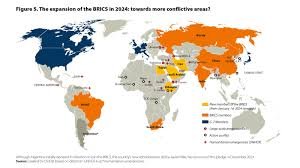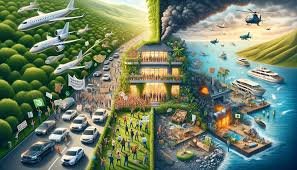Emerging Geopolitical Tensions: The State of International Relations in 2024

Introduction: A Changing Global Landscape
As we enter 2024, the geopolitical landscape is characterized by significant shifts and emerging tensions that have far-reaching implications for international relations. Factors such as economic competition, territorial disputes, and ideological conflicts are driving these changes. This article explores the current state of global geopolitics, highlighting key tensions and their potential impacts.
1. U.S.-China Relations: A New Era of Competition
The relationship between the United States and China continues to be a focal point of geopolitical tension in 2024. Key aspects include:
- Economic Rivalry: The economic competition between the U.S. and China is intensifying, particularly in technology and trade. The U.S. is increasingly imposing tariffs and restrictions on Chinese goods, while China is seeking to bolster its domestic industries and reduce dependence on foreign technology.
- Military Posturing: Tensions in the South China Sea remain high as both nations assert their influence in the region. The U.S. continues to conduct freedom of navigation operations, while China expands its military presence. This military posturing raises concerns about potential conflicts and escalations.
- Global Alliances: Both nations are seeking to strengthen their alliances. The U.S. is reinforcing partnerships with allies in the Indo-Pacific region, while China is enhancing its influence in Africa and Latin America through infrastructure investments and trade agreements.
2. Russia’s Influence and the European Response
Russia’s geopolitical maneuvers continue to pose challenges to European security in 2024. Key developments include:
- Ukraine Conflict: The ongoing conflict in Ukraine remains a significant concern for Europe and the West. In 2024, diplomatic efforts to resolve the conflict are ongoing, but tensions persist as both sides remain entrenched in their positions.
- Energy Security: Europe is facing energy challenges due to its reliance on Russian gas. In response, European nations are investing in renewable energy sources and seeking alternative suppliers to reduce dependence on Russia, reshaping the continent’s energy landscape.
- NATO’s Role: NATO continues to play a crucial role in European security. The alliance is enhancing its presence in Eastern Europe to deter potential aggression from Russia, signaling a commitment to collective defense.
3. Middle East Dynamics: Shifting Alliances
The geopolitical landscape in the Middle East is also undergoing significant changes in 2024. Key trends include:
- Normalization of Relations: Several Arab nations are normalizing relations with Israel, reshaping regional dynamics. This shift has implications for the Palestinian issue and the broader Arab-Israeli conflict, creating both opportunities and challenges for peace.
- Iran’s Regional Influence: Iran continues to assert its influence in the region through proxy groups and strategic partnerships. The tensions between Iran and neighboring countries, particularly Saudi Arabia and Israel, remain a focal point of concern.
- U.S. Withdrawal and Its Implications: The U.S. has been reassessing its military presence in the Middle East, prompting regional powers to adapt their strategies. This shift may lead to increased competition among regional actors as they seek to fill the power vacuum left by the U.S.
Conclusion: Navigating a Complex Geopolitical Landscape
As we progress through 2024, the geopolitical tensions shaping international relations are multifaceted and interconnected. From U.S.-China competition to European security concerns and Middle Eastern dynamics, the global landscape is evolving rapidly. Understanding these complexities is crucial for policymakers and citizens alike as they navigate an increasingly volatile world. Addressing these challenges requires diplomacy, cooperation, and a commitment to multilateralism to foster stability and peace.







